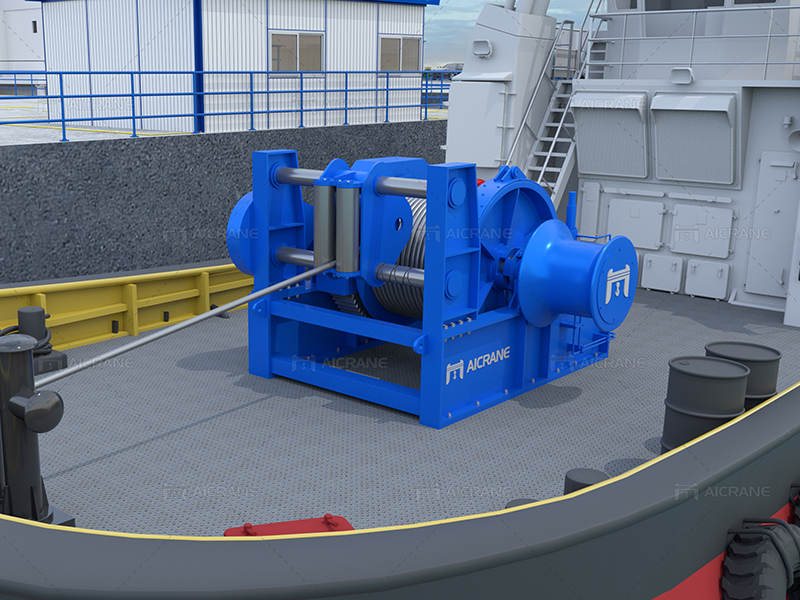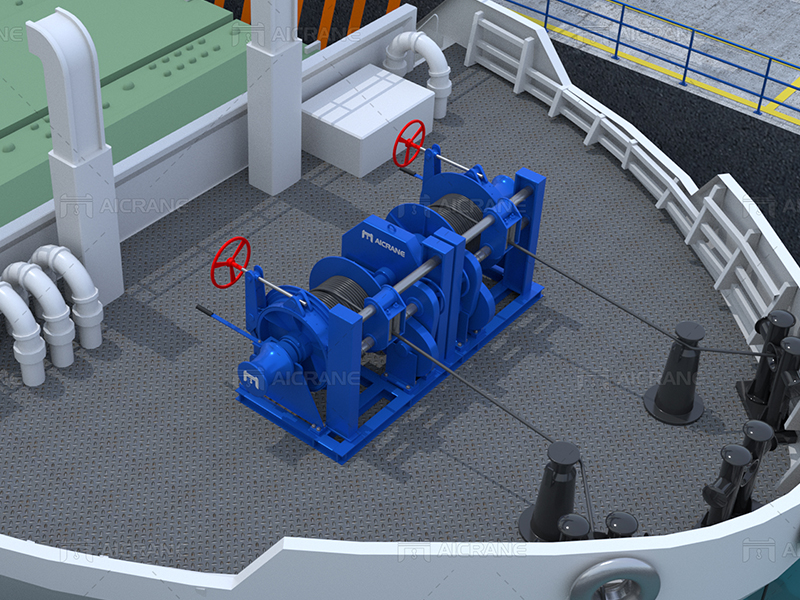In the vast expanse of the world’s oceans, where mighty vessels navigate tumultuous waters, ship winches emerge as unsung heroes. These mechanical workhorses play a pivotal role in the maritime industry, performing tasks essential for a ship’s functionality and safety. From anchoring to towing and mooring, ship winches are indispensable, contributing to the efficiency and effectiveness of maritime operations.

Defining Ship Winches
A ship winch is a mechanical device designed to handle the movement and control of heavy loads on a ship. These robust systems consist of several key components working in tandem, including a drum, motor, gearbox, and brake system. The variety of ship winches available reflects the diverse tasks they are engineered to accomplish, such as anchoring, towing, and mooring.
The Anchor Winch: A Maritime Pillar
Among the various types of ship winches, the anchor winch stands out as a fundamental component for maritime safety. Anchoring is crucial for a ship’s stability, especially during adverse weather conditions or when navigating in busy ports. The anchor winch ensures the controlled release and retrieval of the ship’s anchor, preventing drift and ensuring the vessel remains securely in place.
The anchor winch’s design incorporates considerations for load capacity, allowing it to manage the weight and forces exerted by the anchor and the ship itself. Robust construction and reliable braking systems ensure that the anchor can be held securely, even in challenging conditions.
Towing Winches: Enabling Seamless Navigation
Towing winches are another category of ship winches with a vital role in maritime activities. These winches facilitate the towing of other vessels or objects, a common occurrence in port operations, salvage operations, or emergency situations. The towing winch’s design allows for the controlled deployment and retrieval of towlines, ensuring a smooth and secure towing process.
Depending on the specific requirements of a ship, towing winches may come in single-drum or double-drum configurations. Single-drum winches are simpler and more compact, suitable for lighter towing tasks, while double-drum winches offer enhanced versatility and control in more complex operations.
Mooring Winches: Safeguarding Ships in Port
Mooring winches play a critical role when a ship is berthed at a port. These winches are responsible for securing the ship to the dock, preventing unintended movement or drift. The controlled and synchronized operation of mooring winches is crucial during the delicate process of docking and undocking.
The mooring winch’s importance extends beyond mere stability; it contributes to the safety of port operations by preventing collisions and ensuring a secure connection between the ship and the shore. These winches are designed to handle dynamic loads, adapting to the changing forces experienced during mooring.

Selection Criteria for Ship Winches
Choosing the right ship winch is a nuanced process that involves careful consideration of various factors. Load capacity, speed, and efficiency are paramount considerations. The winch must be capable of handling the heaviest loads a ship may encounter, and its operation should align with the vessel’s requirements.
Environmental conditions also play a role in winch selection. Ships operating in different regions and climates may face varying challenges, such as extreme temperatures, corrosive saltwater, or icy conditions. As such, ship winches must be resilient and resistant to environmental factors, ensuring reliable performance in diverse settings.
Maintenance requirements are another crucial aspect of winch selection. A well-designed winch should have accessible components for regular inspections and routine maintenance. This contributes to the overall longevity of the system and prevents unexpected failures during critical operations.
Integration and Safety Measures
Installing a ship winch involves careful integration into the ship’s structure and power systems. Proper mounting and positioning are essential to ensure the winch’s stability and functionality. The connection to the ship’s power system, whether electric or hydraulic, must be seamless to guarantee consistent and reliable power delivery.
Safety considerations are paramount in ship winch design. Emergency stop mechanisms, overload protection, and adherence to international standards contribute to the overall safety of maritime operations. These features ensure that winch operators can swiftly respond to unforeseen circumstances, preventing accidents and protecting both the ship and its crew.
Maintenance and Future Developments
Regular maintenance is crucial for the longevity and reliability of ship winches. A well-defined inspection schedule, proper lubrication, and timely troubleshooting and repairs contribute to the overall efficiency of the system. Lessons learned from past projects and case studies of successful installations provide valuable insights for continuous improvement in winch design and operation.
Looking ahead, the maritime industry continues to witness advancements in ship winch technologies. Emerging technologies, such as automation and remote control systems, are being integrated into modern marine ship winches, further enhancing their efficiency and safety. These innovations aim to streamline maritime operations, reduce human intervention, and improve overall system performance.
Conclusion
In the intricate tapestry of maritime operations, marine winches emerge as the unsung heroes, silently powering the movements that ensure a ship’s stability, safety, and functionality. From anchoring in turbulent waters to towing vessels in distress and securing ships in bustling ports, the purpose and importance of ship winches are undeniable. As technology advances, these essential components of maritime machinery continue to evolve, contributing to the efficiency and safety of the global shipping industry.